
Insulation on your roof is an important aspect for energy efficiency. Your home’s roof is one of the most important parts of your home. It protects you and your family from the elements, provides insulation, and adds to the overall aesthetic and value of your property. But often, unless we are building a new home or have encountered an issue within the roof of our existing home, we give very little thought to the roof of our home or the roof insulation.
But did you know that your roof insulation plays a vital role in keeping your home energy-efficient and comfortable? However, insulation that is old or damaged can cause significant energy losses, resulting in high energy bills, higher carbon emissions and ….. well, a less comfortable living environment!
In this post, we’ll discuss the importance of inspecting and upgrading old roof insulation for energy efficiency. We’ll go over the signs of poor insulation, the benefits of upgrading, and the different options available for upgrading your insulation. Whether you’re a homeowner looking to save money on your energy bills or a business owner looking to reduce your carbon footprint, read on to learn more about the importance of upgrading old roof insulation.
1. Insulation for Energy Efficiency: The basics of roof insulation
When it comes to roof insulation, it’s crucial to understand the basics. Roof insulation is the term we use to describe insulation that is installed within the attic space of your home or building. A well insulated roof will usually have multiple layers of insulation located in different areas or the roofing structure. It can be a reflective insulation between the roofing tiles or timber,
The main purpose for having roof insulation is to reduce heat flow in and out of your home or business. A secondary purpose may well be to protect the roofing structure by helping to control moisture.
In winter, or colder climate zones, roof insulation works by preventing heat from escaping out from your home through the roof. This is important because heat rises, so without proper insulation, much of the heat produced by your heating system will simply escape through the roof. Thats your hard earned money going up in thin air!!
In summer, good roof insulation will also reduce the amount of radiated heat that passes through the roof, keeping your home cooler and more comfortable, while reducing the need to operate air conditioning systems. That means more money in your bank!
There are several different materials that can be used for roof insulation. The most popular for many residential or low rise commercial buildings include fiberglass, polyester, polystyrene, and closed cell polyurethane sandwiched between 2 layers of aluminium foil. In some instances you may also use a spray on foam insulation or in very rare circumstances a blown in cellulose insulation. Each material has its own benefits and drawbacks, so it’s important to consult with a professional to determine which one is best for your specific building and climate.
Properly installed roof insulation can provide numerous benefits, including increased energy efficiency, which leads to lower power bills. It can also help to keep your home or building more comfortable, as it will help to maintain a consistent temperature throughout the year.
Some roof insulation products also create a vapour barrier to protect your home from moisture build up an the toxic mould that can result from this.
In addition to its energy-saving benefits & moisture control, roof insulation can also help to reduce noise pollution. This is particularly important if you live in a noisy area, or if you have a commercial building that is located near a busy street, train line or airport.
Overall, roof insulation is an essential component of any energy-efficient building. By understanding the basics of roof insulation and consulting with a professional to ensure that your insulation is properly installed and up-to-date, you can enjoy lower energy costs, increased comfort, and a more sustainable future.
2. Insulation for Energy Efficiency – How roof insulation impacts energy efficiency
Roof insulation plays a significant role in the energy efficiency of your home or building. When you have old, outdated, or damaged insulation in your roof, your heating and cooling systems will have to work harder to maintain a comfortable temperature indoors. This means that you will end up using more energy, which will lead to higher energy bills. In addition, poor insulation can also cause drafts or cold spots in the winter and hot spots in the summer, which can make your living or working space uncomfortable.
On the other hand, upgrading your roof insulation can help reduce your energy consumption and lower your utility bills. By having proper insulation installed, you can keep your indoor temperatures stable and reduce the workload of your HVAC systems. This means that you will use less energy to heat or cool your space, which is not only environmentally friendly but also cost-effective in the long run.
Furthermore, if you are looking to sell your property, having a well-insulated roof can also be a selling point. Potential buyers are increasingly aware of the importance of energy efficiency and may be attracted to properties that have been upgraded with energy-saving features. So, inspecting and upgrading your old roof insulation is not only beneficial for your wallet and the environment but also a wise investment for the future of your property.
3. Insulation for Energy Efficiency – Warning signs that your roof insulation may need upgrading
It’s essential to inspect your roof insulation regularly, as it can become less efficient over time due to wear and tear, changes in temperature, or infestations. Upgrading your insulation can not only reduce your energy bills, but it can also make your home more comfortable and healthier to live in.
There are several warning signs that your roof insulation may need upgrading. One of the most obvious signs is an increase in your energy consumption. Your energy bills will most likely be increasing regularly as the price of energy increases. However, if you notice that your energy consumption is increasing over time this could be a sign that your roof insulation is deteriorating and no longer working as efficiently as it should be. Your energy consumption is the quantity of kilowatts of electricty or millijoules of gas your property uses throughout the year. In a well insulated property, the energy consumption should stay consistent from 1 year to the next. The best way to check this is by comparing your total energy consumption for a given month from last year to the same month this year.
Another warning sign is uneven temperatures in your home. If you notice that some rooms are warmer or cooler than others, it could be a sign that your insulation is not evenly distributed. This can result in drafts and cold spots in your home, which can be uncomfortable and potentially harmful to your health.
You may also notice damp or mold on your ceilings or walls, which can be a sign of poor insulation or ventilation in your roof space. Damp and mold can be harmful to your health and can also damage your home’s structure.
Finally, if your roof insulation looks old or damaged, it may be time to upgrade it. Over time, insulation can settle, become compressed, or lose its effectiveness, which can result in a less efficient home.
If you notice any of these warning signs, it’s important to inspect your roof insulation and consider upgrading it to ensure your home is energy-efficient, comfortable, and healthy to live in.
4. Insulation for Energy Efficiency – The dangers of ignoring old roof insulation
Ignoring old roof insulation can pose a serious threat to your home and your family. Firstly, old insulation can become a breeding ground for mold and mildew which can cause respiratory problems and allergies. This can be particularly harmful to young children, the elderly and people with pre-existing respiratory conditions such as asthma. Mold and mildew can grow in damp insulation, which is why it is important to check the condition of your insulation regularly.
In addition to health risks, old insulation can also lead to energy inefficiencies within your home, causing your energy bills to skyrocket. Inadequate roof insulation allows heat to pass through your roof, which means that your heating & cooling system has to work much harder to maintain a comfortable temperature. This results in higher energy bills and wasted energy resources.
As well as this, over time old insulation can become a breeding ground for insects and rodents. Even if sharing your home with these ‘lovable’ creatures doesn’t turn your stomach, their nest building can seriously damage insulation, and their droppings can be a health hazard!
All in all, ignoring old roof insulation is not a good idea. It can pose a serious threat to your home, your health, and your finances. Therefore, it is important to regularly inspect and upgrade your roof insulation to ensure that it is in good condition and is providing the energy efficiency that your home needs.
5. Insulation for Energy Efficiency – The benefits of upgrading old roof insulation
By now it should be obvious that opgrading old roof insulation is a worthwhile investment for any property owner and can provide a range of benefits, but just in case, let me reiterate.
Firstly, it can significantly improve the energy efficiency of your building, reducing your overall energy consumption and thereby lowering your energy bills. This is because insulation helps to regulate the internal temperature of your property, keeping it cooler in the summer and warmer in the winter without the need for excessive heating or air conditioning.
In addition, upgrading your roof insulation can also improve the comfort of your living or working space. With proper insulation, you won’t have to worry about drafts or cold spots, making your property more enjoyable to be in year-round.
Another key benefit of upgrading old roof insulation is that it can help to extend the lifespan of your roofing materials. This is because insulation helps to regulate the temperature of your roof, preventing it from getting too hot or too cold, which can cause materials to expand and contract excessively and eventually lead to damage. By keeping your roofing materials in good condition, you can avoid costly repairs or replacements down the line.
Finally, upgrading your roof insulation can also be beneficial for the environment. By reducing your energy consumption, you’ll be doing your part to reduce your carbon footprint and contribute to a more sustainable future. Overall, upgrading old roof insulation is a smart choice that can provide a range of benefits, both for your wallet and for the planet.
6. Insulation for Energy Efficiency – What to consider when inspecting roof insulation
When inspecting your roof insulation, there are a few important factors to consider. The first is the age of the insulation. If it’s more than 10-15 years old, it’s likely time to upgrade it. Over time, insulation can become compressed, damaged, or less effective due to moisture or settling. This can lead to increased energy consumption and reduced indoor comfort.
Another important factor to consider is the R-value of the insulation. The R-value measures the insulation’s resistance to heat flow, with a higher R-value indicating better insulation performance. As energy costs rise and the world becomes more energy conscious, energy efficiency ratings are being increased. Depending on where you live, your climate, and the type of insulation installed, you may need to upgrade your insulation to meet current energy efficiency standards.
It’s also important to inspect for any gaps, holes, or other damage in the insulation. Even small gaps can cause significant heat loss and reduce the effectiveness of your insulation. If you notice any damage, it’s important to address it as soon as possible to prevent further energy loss.
Finally, check your insulation for signs of pest infestations like mice, rats, possums, snakes or cockroaches. Even if these critters haven’t yet damaged the insulation, you may want to have them removed.
Also consider the type of insulation installed and whether it is sufficient or can be improved. For instance, if you only have foil insulation, you may want to consider adding a bulk insulation, especially if you live in a colder climate zone.
By carefully inspecting these factors and upgrading your insulation as needed, you can improve your home’s energy efficiency, reduce your energy bills, and increase indoor comfort.
7. How to upgrade old roof insulation for energy efficiency
If you have an old roof, it’s likely that the insulation may have deteriorated over time. This can lead to increased energy costs as your home loses heat more quickly, which can also make your home less comfortable. Luckily, upgrading old roof insulation is relatively easy and can have a significant impact on your energy efficiency.
The first step in upgrading your old roof insulation is to inspect it to determine the type of insulation and its condition. If the insulation is damaged it will need to be replaced. If the insulation has compressed over time, or even it’s in good condition but has a lower R-value than recommended for your area, it may be worth adding additional insulation to improve its effectiveness.
One option for upgrading insulation is to add a layer of polyester or fiberglass batt insulation on top of the existing insulation. This is a cost-effective solution that can be done quickly and means you get to benefit from a much greater R-Value for less cost than replacing. However it’s important to ensure that the existing insulation is in good condition before adding the new layer.
Another option is to remove the existing insulation and replace it with a higher R-value material. This can be more expensive and time-consuming, but it’s a good solution for roofs with severely degraded insulation that cannot be salvaged. It also affords you the opportunity to have your attic space professionally vacuume to remove all the dust anddebris that naturally accumulates over time.
In addition to upgrading the insulation, it’s also important to ensure that any gaps or leaks in your roof are sealed to prevent air leakage. This can be done with caulking or weatherstripping around windows and doors, or by using foam insulation to seal any gaps or cracks.
By upgrading old roof insulation and sealing any gaps, you can significantly improve your home’s energy efficiency, reduce your energy costs and create a more comfortable environment to live in. When you consider the cost of insulation against the energy savings over a period of time, It’s probably one of the most cost effective and worthwhile investment that can make financially, and will also improve the comfort of your home.
8. The different types of roof insulation available
There are a variety of different types of roof insulation available, each with its own unique benefits. The most common types of insulation are:
- Fiberglass Insulation: This is made up of 85% recucled glass fibers and is commonly used in roofs, attics and walls. It’s affordable, easy to install, and offers good thermal protection.
- Polyester Insulation: This product is made from 80% recycled plastics an is installed into lofts, walls and underfloors. It is particularly good for use in high moisture areas as polyester is hydrophobic and will not be effected by water. It generally costs a little more than fiberglass insulation, but is a firm favorite with DIY install enthusiasts as it is very easy to handle and requires no protective clothing
- Polystyrene, Polyisocyanurate or Thermoset Phenolic Rigid Panel Insulation: Despite the long, technical and tongue twisting names, these rigid panel insulations are very popular and can have some distinct benefits. Their main claim to fame is providing high R-Values at minimal product thicknesses. This can be very avantageous when space is at a premium, or batt insulation just isnt feasable, like in high rise buildings, flat roof homes, or homes with catheral ceilings. Often these rigid panel insulations are also line on 1 side or both with a layer of aluminium foil, which provides a double whammy insulating effect.
- Reflective Insulation: This type of insulation is usually made up of multiple layers of aluminum foil and is designed to reflect heat rather than absorb it. It’s very polular in sunnier climates where keeping the sun out is a primary method to keep homes cool.
- Radiant Barrier Insulation: This is similar to reflective insulation, but it’s designed to block radiant heat transfer as well as reflect the sun. It’s often used on hot roofs or in attics to prevent heat from entering the home.
- Spray Foam Insulation: This is a popular choice for new construction and renovations where installation of batt insulation is not possible, practical or desireable. It is most often used in commercial or industrial applications.
It’s a spray-applied plastic that expands and hardens, creating an airtight seal that helps prevent passing through the structure it is applied to.
Choosing the right type of insulation for your home will depend on a variety of factors, including your climate, the age and condition of your roof, and your budget. Consulting with a roofing or insulation professional can help you determine the best option for your needs and help ensure that your home remains energy-efficient for years to come.
9. Insulation for Energy Efficiency: DIY vs. professional installation
When it comes to inspecting and upgrading your old roof insulation for energy efficiency, you may be tempted to take on the job yourself. While DIY projects can be satisfying and cost-effective, it’s important to weigh the benefits against the risks before making a decision.
Firstly, consider your level of expertise. Do you have experience with roofing and insulation? If not, there is a higher risk of making mistakes that can lead to further damage to your roof and insulation. Additionally, installing insulation can be physically demanding and dangerous, especially if you have a steep roof or multiple stories.
On the other hand, hiring a professional roofing contractor can offer peace of mind and quality workmanship. A professional will have the equipment, skills, and experience to make sure the job is done correctly, efficiently, and safely. Furthermore, they may be able to provide a warranty or guarantee for their work, so you can have confidence in the longevity of your new insulation.
Ultimately, the decision to DIY or hire a professional will depend on your comfort level, budget, and the scope of the project. However, it’s important to consider all factors and make an informed decision to ensure the energy efficiency and longevity of your roof insulation.
10. Conclusion: Why upgrading old roof insulation is a smart investment
In conclusion, upgrading old roof insulation is a smart investment for many reasons. Firstly, it can significantly improve the energy efficiency of your home, reducing your energy bills and ultimately saving you money in the long run. A well-insulated home also provides a more comfortable living environment, with fewer drafts and more consistent temperatures throughout the year. This can be especially important in areas with extreme weather conditions.
Additionally, upgrading your insulation can increase the value of your home and make it a more attractive prospect to potential buyers. With more and more people becoming environmentally conscious, a home with good insulation and energy efficiency can be a big selling point.
Finally, upgrading your roof insulation is also a wise choice from an environmental perspective. Reducing your energy consumption helps to reduce your carbon footprint, which is good for the planet and future generations.
Overall, while upgrading old roof insulation may require an initial investment, the benefits far outweigh the costs. In the long run, it can save you money, provide a more comfortable living environment, increase the value of your home, and help to protect the environment.
We hope that this blog post has been informative and has highlighted the importance of inspecting and upgrading your old roof insulation for energy efficiency. By doing so, you can save money on energy bills, reduce your carbon footprint, and make your home more comfortable. If you haven’t inspected your roof insulation in a while, we highly recommend doing so as soon as possible. It’s a small investment that can make a big difference in the long run. Thank you for reading, and we hope you put this knowledge to good use!
Best Roof Insulation Products
-
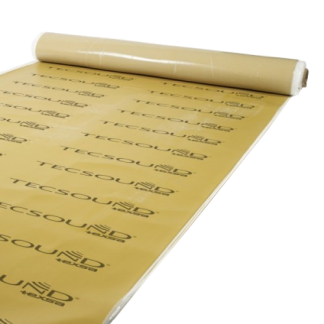
Tecsound SY
$259.05 – $286.42 Buy Now! -

Higgins Insulation Polyester Ceiling Insulation Batts
From $20.31 p/m2 inc GST Buy Now! -
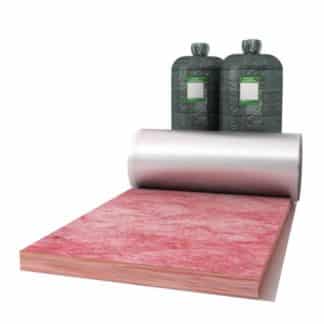
Fletcher Permastop® Building Blanket Insulation – Heavy Duty Foil
$217.23 Buy Now! -

Fletcher Permastop® Building Blanket Insulation – Light Duty Foil
$197.15 – $268.29 Buy Now! -

Fletcher Permastop Roofing/Roof Blanket Insulation – Medium Duty Foil
$192.20 – $279.82 Buy Now! -
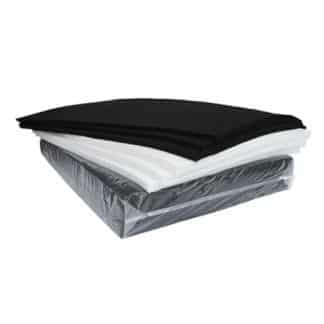
20kg/m³ Autex GreenStuf® Polyester Acoustic Blanket (AAB)
$46.97 – $62.68 Buy Now! -

32kg/m³ Autex GreenStuf® Polyester Acoustic Blanket (AAB)
$482.23 Buy Now! -

48kg/m³ Autex GreenStuf Polyester Acoustic Blanket (AAB)
$722.32 Buy Now! -
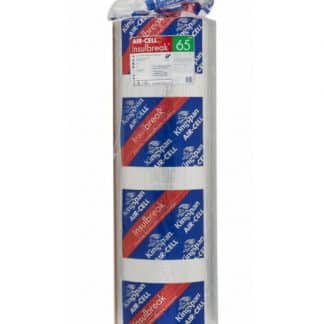
Kingspan Air-Cell Insulbreak 70 Insulation
$444.06 Buy Now! -
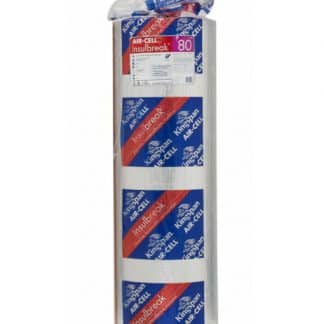
Kingspan Air-Cell Insulbreak 90 Insulation
$597.59 Buy Now! -
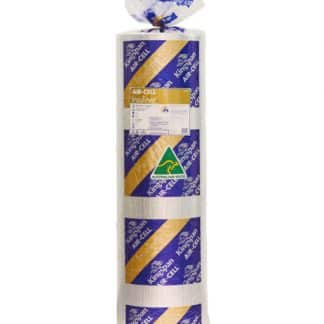
Kingspan Air-Cell Insuliner Insulation
$434.06 Buy Now! -
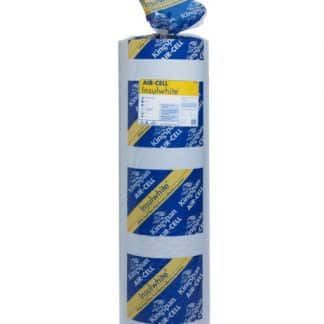
Kingspan Air-Cell Insulwhite Insulation
$520.51 Buy Now! -
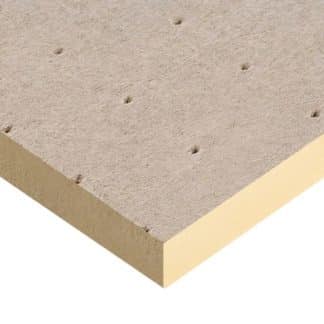
Kingspan Thermaroof TR27 LPC/FM
$221.00 Buy Now! -
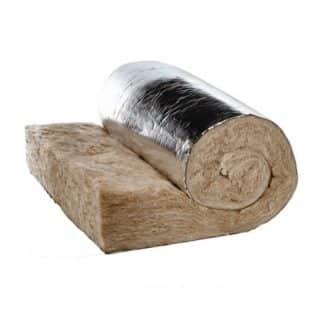
Knauf Earthwool Roofing Blanket Roll with Foil Facing
$188.71 – $255.31 Buy Now! -
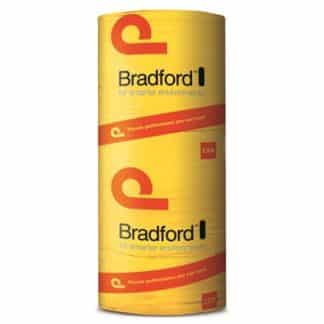
Bradford Anticon™ Roofing Insulation Blanket – Light Duty Foil
$102.23 – $157.20 Buy Now! -

Bradford Anticon™ Roofing Insulation Blanket – Medium Duty Foil
$109.57 – $165.97 Buy Now!
Check out Insulation Easy products for residential and commercial buildings.
Insulation Easy online store sells a wide range of thermal and acoustic insulation products. In addition to this, we also sell Kingspan Kooltherm®, Kingspan Air-Cell®, Mass Loaded Vinyl, Nuwrap Pipe Lagging Insulation, Foilboard Greend Rigid Panels, Fibertex Rock-wool, Autex GreenStuf, Knauf Earthwool, Fletchers Pink Batts and Bradford Gold Batts.
If you have any questions or require a special delivery quotation, don’t hesitate to Contact Us! You can also get a free obligation quote here. Check out other insulation supplies in Insulation Easy.
For additional information about warranty, delivery and returns. Like us on Facebook.
